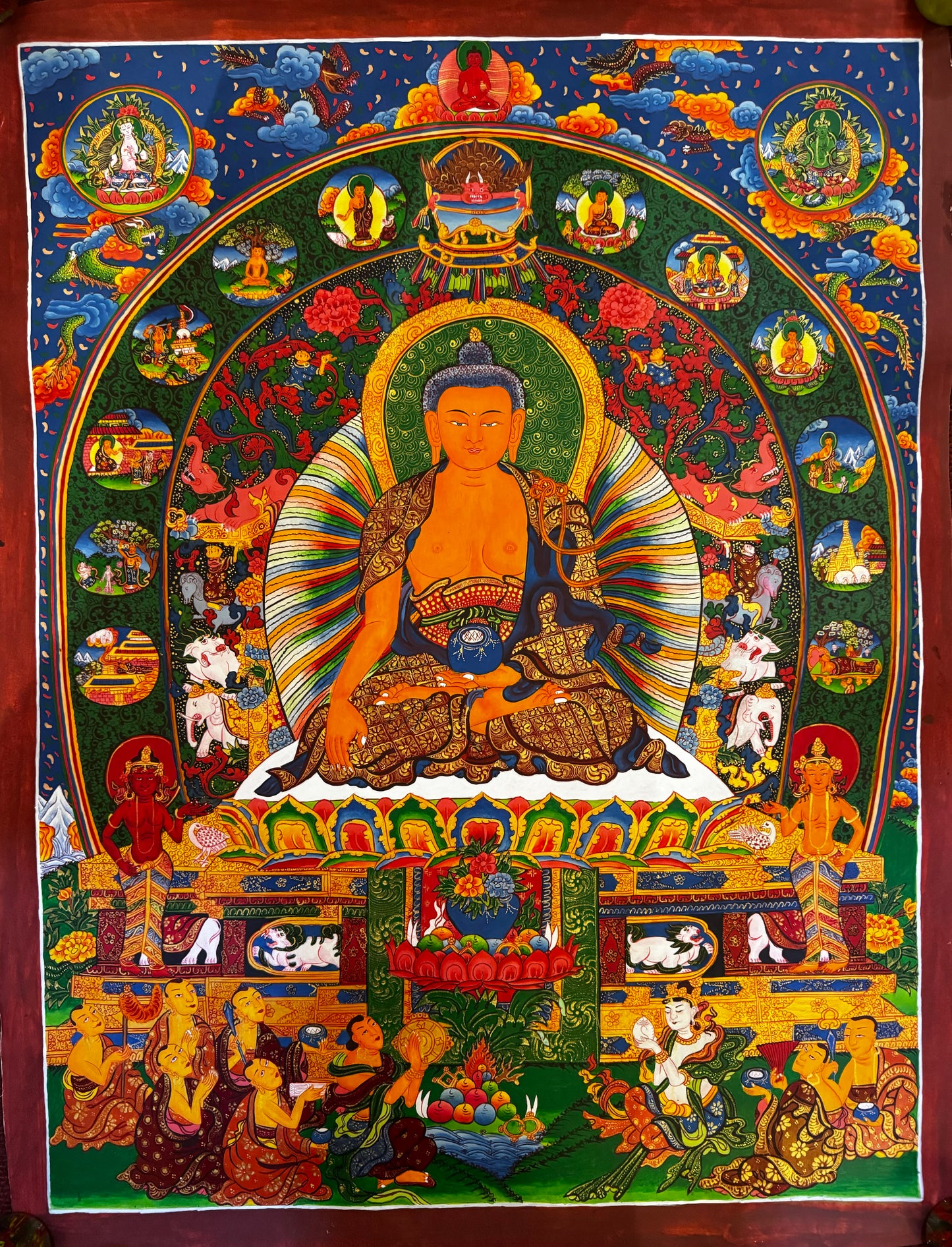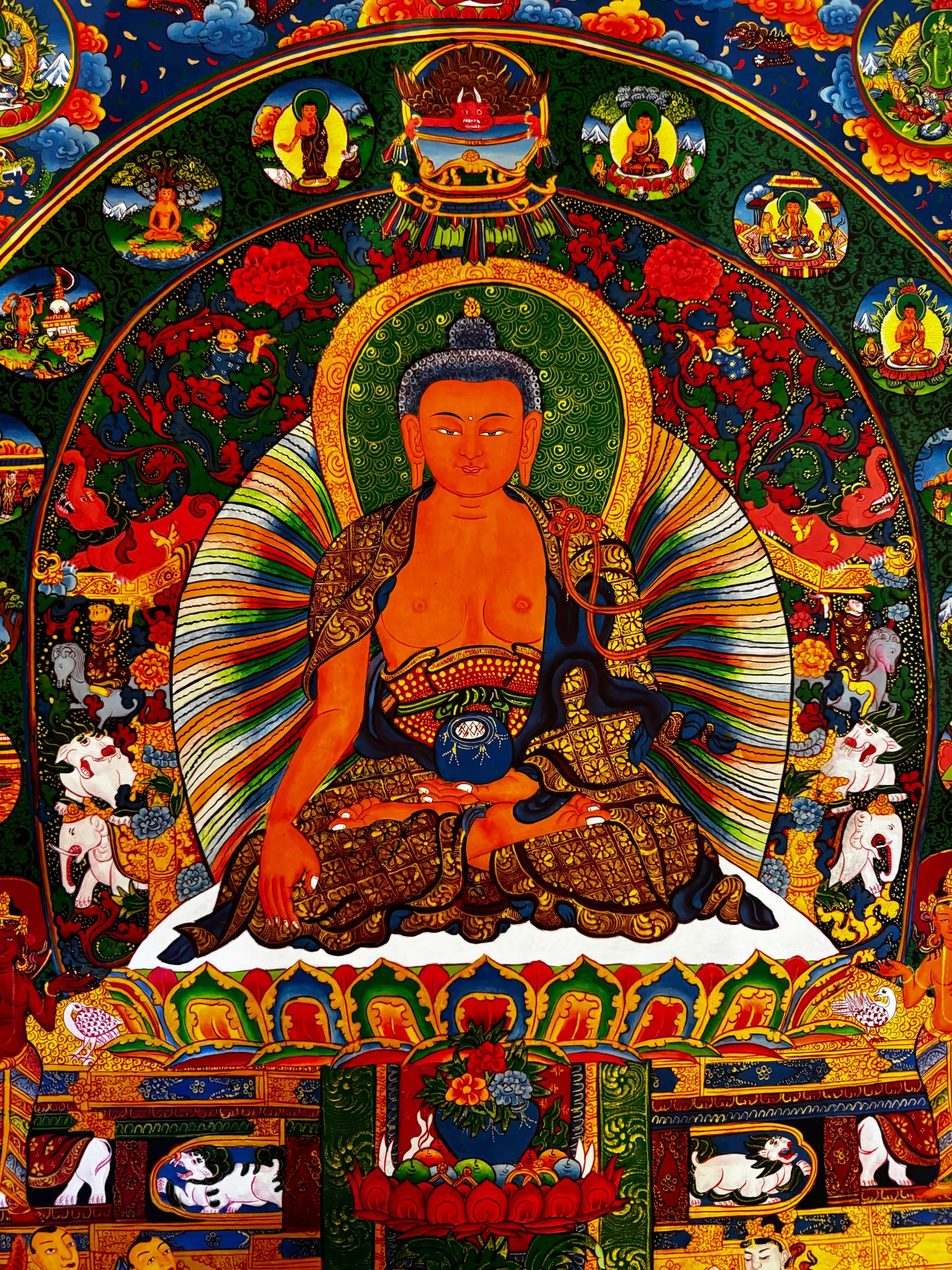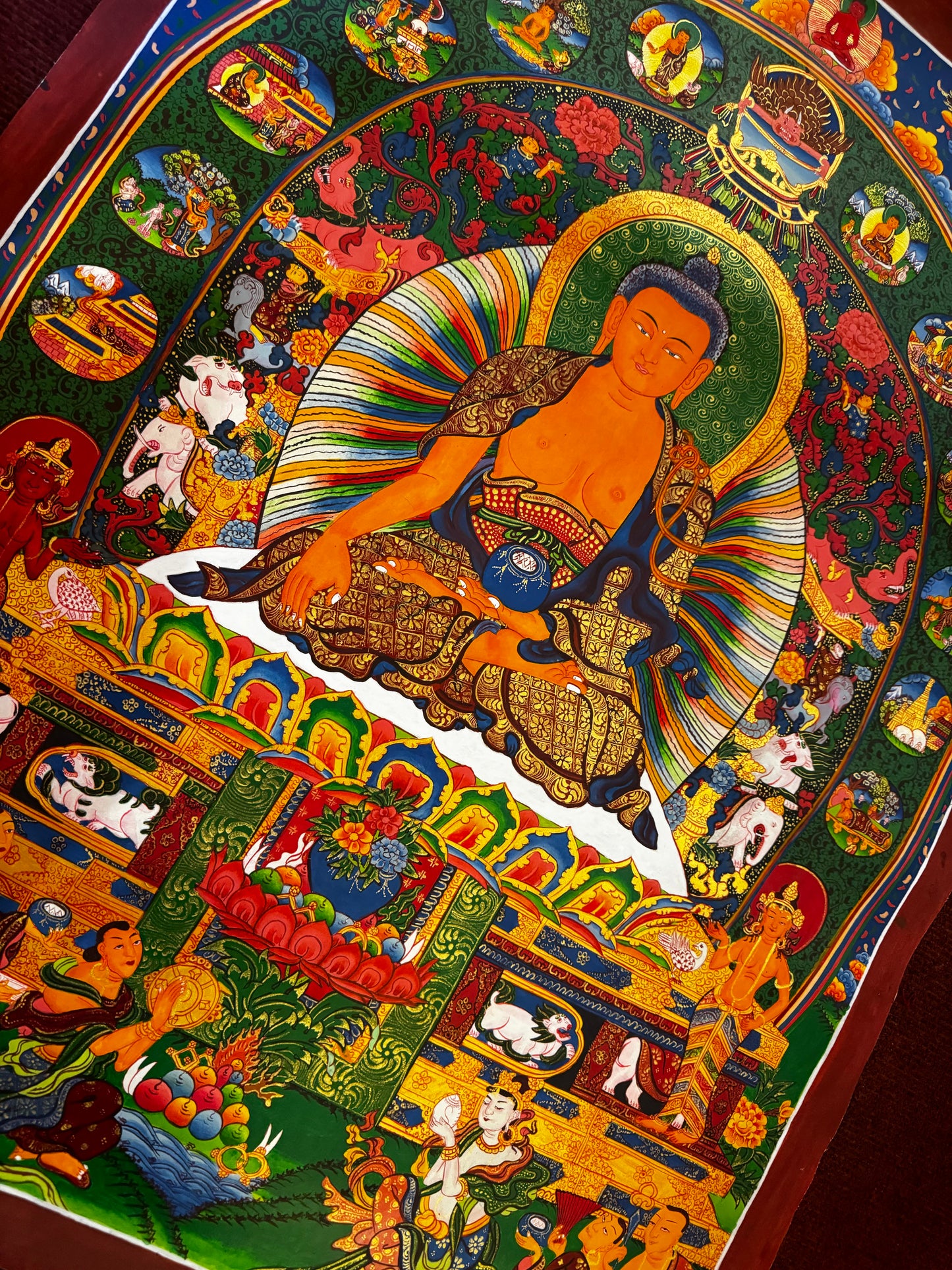My Store
Tibetan Art/ Shakyamuni Buddha
Tibetan Art/ Shakyamuni Buddha
SKU:NLT 32093/ R180
Couldn't load pickup availability
Share
Shakyamuni Buddha, also known simply as Siddhartha Gautama or Gautama Buddha, was the founder of Buddhism and is regarded as the historical Buddha. The title "Shakyamuni" means "Sage of the Shakyas," referring to the Shakya clan to which he belonged. His life and teachings are the foundation of the Buddhist tradition.
Here are key aspects of Shakyamuni Buddha's life and teachings:
-
Birth and Early Life:
- Siddhartha Gautama was born in Lumbini, present-day Nepal, around the 6th century BCE. His father was King Suddhodana, and his mother was Queen Maya. His birth is traditionally celebrated as Vesak or Buddha Purnima.
-
The Four Sights:
- Despite being raised in luxury, Siddhartha encountered the realities of old age, sickness, and death during four encounters outside the palace. These experiences prompted him to seek a solution to the problem of suffering.
-
Renunciation:
- Motivated by a deep desire to understand the nature of suffering and find a path to liberation, Siddhartha renounced his royal life, leaving behind his family and princely possessions.
-
The Great Departure:
- Siddhartha embarked on a spiritual quest, studying under various teachers and practicing asceticism. However, he found these paths did not lead to the ultimate understanding he sought.
-
The Enlightenment (Bodhi):
- Siddhartha meditated under the Bodhi tree in Bodh Gaya. After intense meditation, he attained enlightenment at the age of 35, becoming the Buddha, which means "the awakened one" or "the enlightened one."
-
The Four Noble Truths:
- The Buddha's first sermon, known as the Turning of the Wheel of Dharma, outlined the Four Noble Truths:
- The truth of suffering (dukkha).
- The truth of the cause of suffering (samudaya).
- The truth of the end of suffering (nirodha).
- The truth of the path to the end of suffering (magga).
- The Buddha's first sermon, known as the Turning of the Wheel of Dharma, outlined the Four Noble Truths:
-
The Eightfold Path:
- The Eightfold Path, a practical guide to ethical and mental development, is a central teaching in Buddhism. It includes right understanding, right intention, right speech, right action, right livelihood, right effort, right mindfulness, and right concentration.
-
Teaching and Establishment of Sangha:
- The Buddha spent the rest of his life teaching his insights and establishing a community of monks (sangha) and nuns. His teachings were transmitted orally and later compiled into the Tripitaka or Pali Canon.
-
Parinirvana:
- The Buddha passed into parinirvana, the final cessation of physical and mental existence, around the age of 80, in Kushinagar, India.
The life and teachings of Shakyamuni Buddha form the basis of various Buddhist traditions. His teachings emphasize the Four Noble Truths, the Eightfold Path, and the cultivation of mindfulness and compassion as a means to attain liberation from suffering. The Buddha's legacy continues to inspire millions of people around the world on their spiritual journeys






